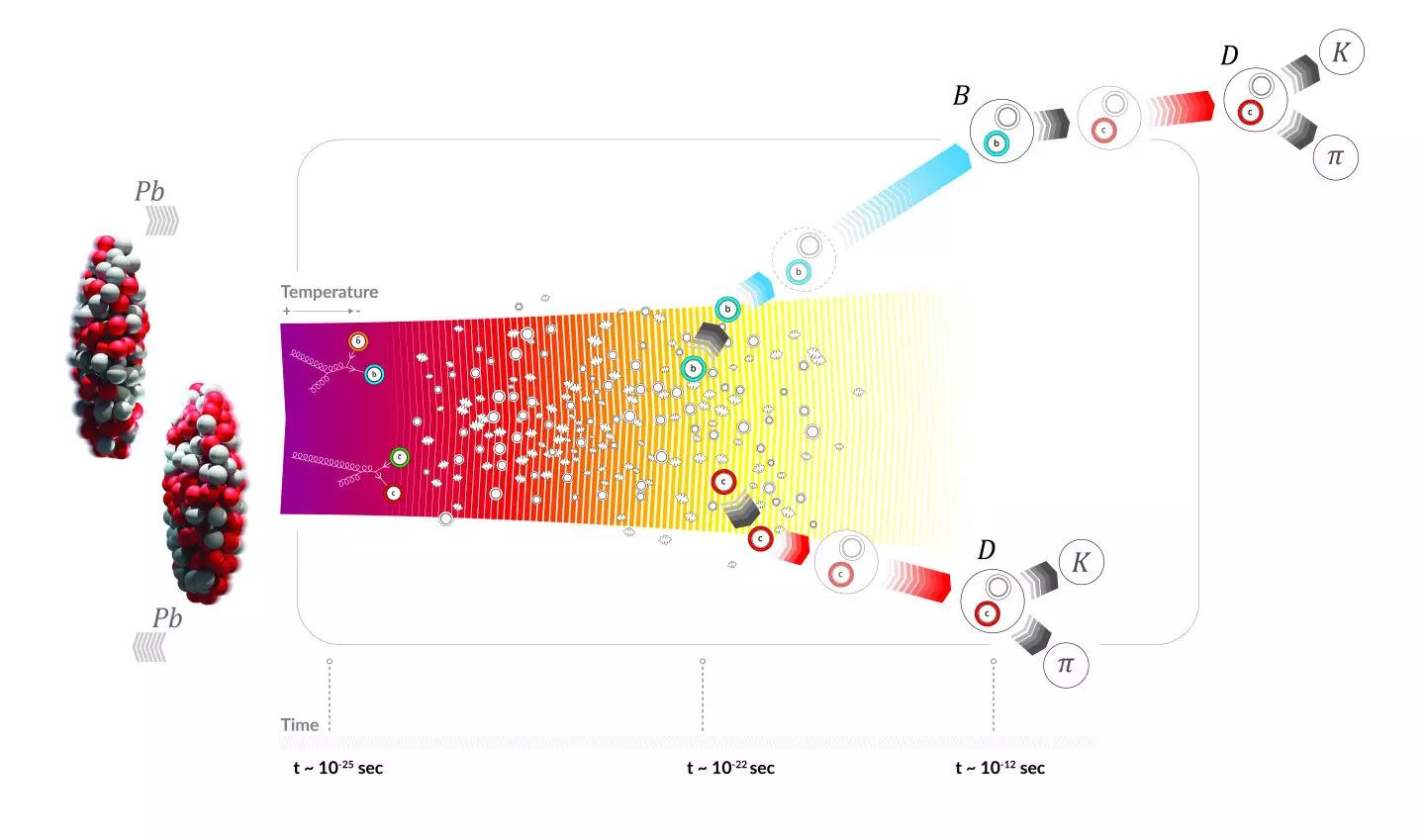In the world of particle physics, understanding the behavior of quarks and gluons is a fundamental pursuit. When two lead ions collide at the Large Hadron Collider (LHC), they generate an incredibly hot and dense state of matter known as quark-gluon plasma. This unique state of matter is believed to have existed in the early moments after the Big Bang, only lasting for a few millionths of a second. The study of this plasma can provide valuable insights into the behavior and properties of quarks and gluons.
One of the key aspects of investigating the quark-gluon plasma is studying the flow of hadrons, which are composite particles made up of quarks and gluons. In particular, the elliptic flow of hadrons can reveal important information about the properties of the plasma. The elliptic flow refers to the azimuthal asymmetry in the distribution of particles produced in the collision. By measuring the elliptic flow, scientists can gain a deeper understanding of the characteristics and dynamics of the quark-gluon plasma.
While the majority of quarks and gluons in the plasma are lighter particles, heavy quarks such as charm and beauty quarks play a significant role in the early stages of the collisions. Unlike their lighter counterparts, heavy quarks are produced before the formation of the quark-gluon plasma and continue to interact with it throughout its evolution. The thermalization time, which is the time it takes for the heavy quarks to reach thermal equilibrium with the plasma, is inversely proportional to the quark’s mass. Since charm quarks are lighter than beauty quarks, they are expected to have a shorter thermalization time and a higher degree of thermalization.
Measuring the Elliptic Flow of Heavy Quarks
In a recent study by the ALICE collaboration, a new measurement of the elliptic flow of hadrons containing heavy quarks was reported. The researchers focused on the measurement of B mesons, which are formed by the combination of beauty quarks with the plasma’s lighter quarks. By analyzing non-head-on lead-lead collisions during the LHC’s Run 2, the elliptic flow of non-prompt D mesons (produced in the decays of B mesons) was studied.
To accurately measure the elliptic flow of non-prompt D mesons and distinguish them from prompt D mesons, the research team employed a machine-learning technique. This technique not only separated the products of the decay of non-prompt D mesons but also helped suppress background particle processes that mimic D meson production and decay. The results of this analysis confirmed the expectation that the elliptic flow of non-prompt D mesons would be weaker than that of the prompt ones, shedding new light on the thermalization process of beauty quarks in the quark-gluon plasma.
With the upcoming Run 3 of the LHC, the ALICE collaboration is preparing to expand their study further. The new period of heavy-ion data taking in 2023 will provide a sample of lead-lead collisions that is 40 times larger than previous data sets. This abundance of data will enable scientists to delve deeper into the flow of charm and beauty particles, offering a more detailed understanding of their dynamics within the quark-gluon plasma.
The study of quark-gluon plasma and its behavior is a complex and fascinating field of research. By investigating the elliptic flow of heavy quarks, scientists are acquiring valuable insights into the properties and dynamics of the plasma. The recent measurement of the elliptic flow of B mesons by the ALICE collaboration has provided new knowledge about the thermalization process of beauty quarks. With the future prospects of Run 3 of the LHC, researchers are excited to expand their investigations and deepen our understanding of the quark-gluon plasma.



Leave a Reply